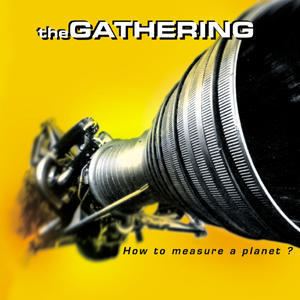Released 9 November 1998 Length 103:21 How to Measure a Planet?
(1998) if then else
(2000) Release date 9 November 1998 | Recorded July–October 1998 Producer Attie Bauw Artist The Gathering Label Century Media Records | |
 | ||
Studio Bauwhaus Studios, Amsterdam and Wisseloord Studios, Hilversum, Netherlands Genres Progressive rock, Alternative rock, Trip rock, Trip hop, Electronica Similar The Gathering albums, Progressive rock albums | ||
The gathering how to measure a planet
How to Measure a Planet? is fifth studio album by the Dutch alternative rock band The Gathering. It was released as a doble CD on 9 November 1998 by Century Media Records. The album was recorded at Bauwhaus Studios, Amsterdam and Wisseloord Studios, Hilversum between July and October 1998 under the guidance of producer Attie Bauw.
Contents
The theme of space travel runs through many of the songs on the album as well as on the cover and CD booklet.
The track "Liberty Bell" was released as a single in Europe, as well as in Canada in a bonus CD distribured with issue 12 of the metal magazine Brave Words & Bloody Knuckles.
Upon release, the album received positive reviews from critics who appreciated the band's absorption of new styles such as shoegaze and trip hop into its sound. However, many fans of the more metallic side of the group were not so pleased and it sold about two-thirds as much as its two predecessors (although some slippage should have been expected, given it was a more expensive two-CD package). Many of the Gathering's fans did stay with the band and, as the members have said, it brought them a whole new fanbase.
How to Measure a Planet? remains something of a high point for the Gathering, with tracks from the album making up the majority of their two subsequent live albums, Superheat (album) (2000) and Sleepy Buildings (2004).
In Japan, a one-CD version of the album was released, omitting the nearly half-hour title track.
Background
Having already achieved some moderate success with Mandylion and Nighttime Birds, the group felt trapped in an artistically controlled corner, which was very limited due to the high expectations from their fan base.
Following the departure of guitarist Jelmer Wiersma, the remaining members of The Gathering decided they needed a change in musical direction. Having only one guitar player implied more space for different elements. Acknowledging the likes of Radiohead's OK Computer and Massive Attack's Mezzanine, and the growing influence of such shoegazer bands as Slowdive and the more ethereal sounds of 4AD bands such as Dead Can Dance, the group took the opportunity to experiment with their sound and reinvent themselves.
Under guidance from producer Attie Bauw, the band embraced innovative recording techniques and a will to experiment, turning away from the standard structuring of their previous recordings. The group developed a different sound, less bombastic, more transparent, which vastly expanded the group's creative spectrum and style.
Track listing
All lyrics written by Anneke van Giersbergen.
Personnel
The Gathering
Production
Songs
1Frail5:05
2Great Ocean Road6:20
3Rescue Me6:22
